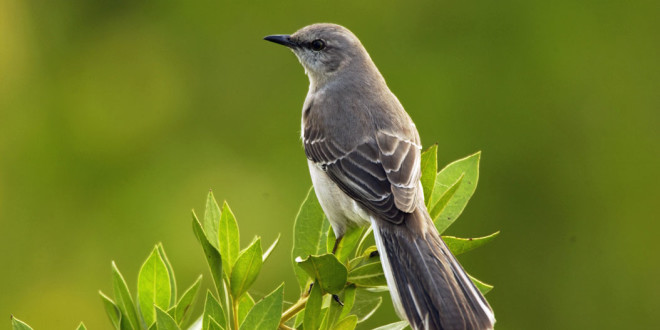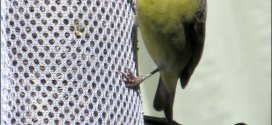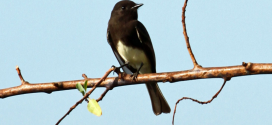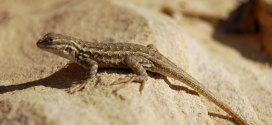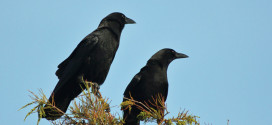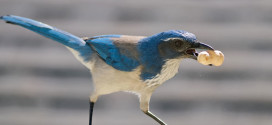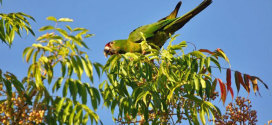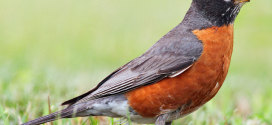If you’ve been hearing an endless string of 10 or 15 different birds singing outside your house, you might have a Northern Mockingbird in your yard. These slender-bodied gray birds pour all their color into their personalities. They sing almost endlessly, even sometimes at night, and they flagrantly harass birds that intrude on their territories, flying slowly around them or prancing toward them, legs extended, flaunting their bright white wing patches.
A medium-sized songbird, a bit more slender than a thrush and with a longer tail. Mockingbirds have small heads, a long, thin bill with a hint of a downward curve, and long legs. Their wings are short, rounded, and broad, making the tail seem particularly long in flight.
Mockingbirds are overall gray-brown, paler on the breast and belly, with two white wingbars on each wing. A white patch in each wing is often visible on perched birds, and in flight these become large white flashes. The white outer tail feathers are also flashy in flight.
Behavior
Northern Mockingbirds are found alone or in pairs throughout the year. They make themselves easily visible, sitting and singing atop shrubs, trees, utility lines, fences, and poles. On the ground they walk, run, and hop along the ground, tail cocked upwards, grabbing at prey on the ground or snatching insects just over the grass. Mockingbirds sometimes fly up and hover to grab at hanging fruit. The Northern Mockingbird is aggressive throughout the year. Females typically fend off other female mockingbirds, while males confront male intruders. Males disputing territory boundaries fly toward each other, land near the boundary, and face off, silently hopping from one side to another. Eventually, one bird retreats and the other chases it a short ways. If neither bird retreats, they may fly at each other, grappling with wings and claws and pecking at each other. Mockingbirds are also territorial around other bird species as well as dogs and cats. The flight style of mockingbirds is variable but typically leisurely, with showy wingbeats. Sometimes Northern Mockingbirds simply drop quickly from a perch with their wings folded.
Habitat
Northern Mockingbirds continue to add new sounds to their repertoires throughout their lives. A male may learn around 200 songs throughout its life. Northern Mockingbirds sing all through the day, and often into the night. Most nocturnal singers are unmated males, which sing more than mated males during the day, too. Nighttime singing is more common during the full moon.
Northern Mockingbirds typically sing from February through August, and again from September to early November. A male may have two distinct repertoires of songs: one for spring and another for fall.
The female Northern Mockingbird sings too, although usually more quietly than the male does. She rarely sings in the summer, and usually only when the male is away from the territory. She sings more in the fall, perhaps to establish a winter territory.
The oldest Northern Mockingbird on record was 14 years and 10 months old.
Northern Mockingbirds eat mainly insects in summer but switch to eating mostly fruit in fall and winter. Among their animal prey are beetles, earthworms, moths, butterflies, ants, bees, wasps, grasshoppers, and sometimes small lizards. They eat a wide variety of berries, including from ornamental bushes, as well as fruits from multiflora rose. They’ve been seen drinking sap from the cuts on recently pruned trees.
Nesting
Mockingbird nests consist of dead twigs shaped into an open cup, lined with grasses, rootlets, leaves, and trash, sometimes including bits of plastic, aluminum foil, and shredded cigarette filters. The male constructs the twig foundation while the female makes most of the lining.
Nest Placement
Shrub
Northern Mockingbirds nest in shrubs and trees, typically 3-10 feet off the ground but sometimes as high as 60 feet. The male probably chooses the nest site and begins building several nests before the female chooses one to finish and lay eggs in. Females may start laying in a second nest while the male is still caring for fledglings from the previous one. Northern Mockingbirds rarely ever reuse their nests.
